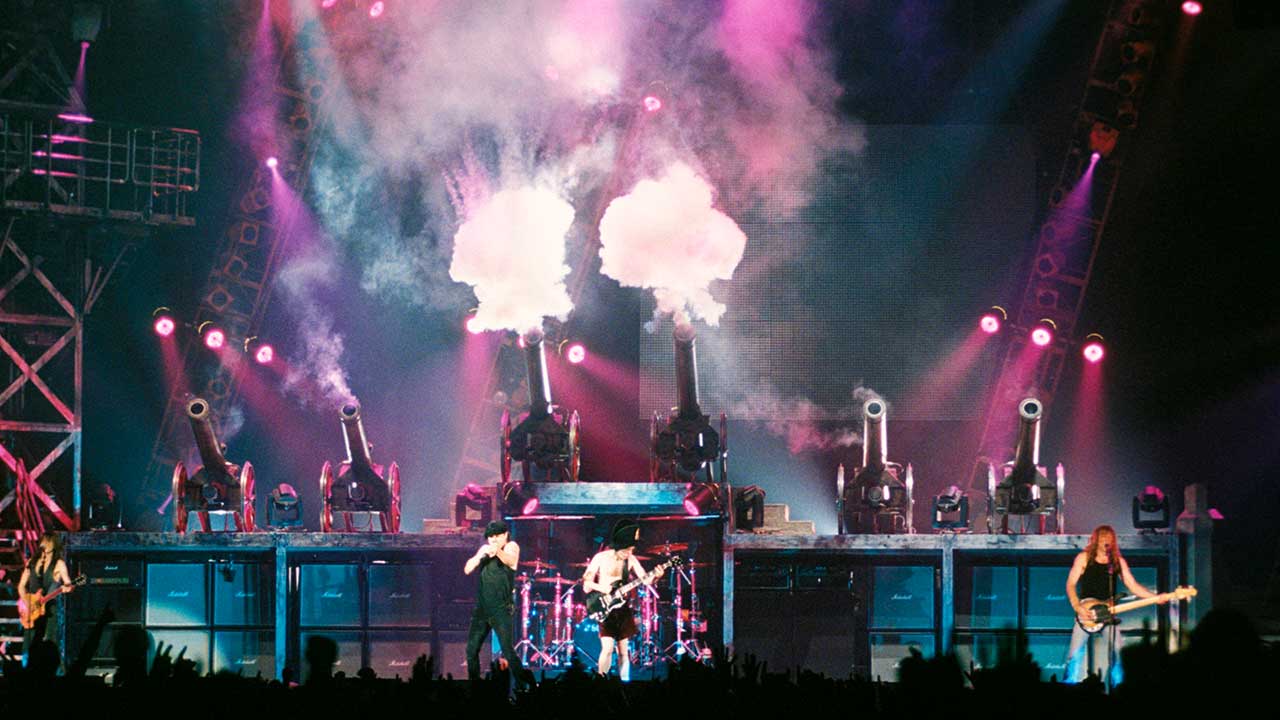Respect to AC/DC's inflatable Rosie, but rock’s ultimate stage prop and boy’s toy will always be the band's cannon. Noisy, phallic, smelly and puerile, it seems incongruous that the band’s iconic battery has its roots in the fairytale marriage of Prince Charles and Diana Spencer at St Paul’s Cathedral in London on July 29, 1981.
That day, grinding out For Those About To Rock across the Channel at EMI Pathé-Marconi Studios in Paris, guitarist Angus Young caught a snatch of the ceremony – and the attendant crack of cannon-fire – on the night manager’s TV.
The sound and symbolism, Young told us, was made-to-measure.
“I just wanted something strong," he said. "Something masculine and rock’n’roll. And what’s more masculine than a cannon, y’know? I mean, it gets loaded, it fires and it destroys."
For Those About To Rock’s title track was duly punctuated by cannon-fire booms. And the concept kept on rolling, with a Napoleonic cannon appearing on the front of the album sleeve, released four months after the royal wedding. The associated tour kicked off in the United States later that year, with two banks of artillery lined up to be ‘fired’ during the finalé.
“There were twelve black boxes each side, in two rows of six, that looked nothing like cannons,” says tour manager Ian Jeffery. “Until they were lifted up from the ground behind the PA, and barrels popped out – when they worked.”
Indeed, before the tour even reached the UK, reliability issues had caused the first batch of cannons – created by Birmingham’ company Light & Sound Design (LSD) – to be scrapped.
“The original concept was based on flaps opening in PA stacks, and the cannons then emerging and firing as they would have done on a pirate ship,” LSD co-founder Terry Lee tells us. “But the problems were both mechanical and pyrotechnic, and so they were replaced with something much more dramatic and reliable.”
“There were sparks flying out everywhere,” admitted Angus in 2004. “So we got rid of them pretty quick and got the two giant cannons that we put either side. The props don’t always work.”
Decades later, AC/DC’s cannons endure. Even if Brian Johnson sometimes wishes they didn’t. “I could write a book about standing under the cannon for thirty years,” the singer said back in 2013. “These horrible sparks come out of them. And at the end of the show I have burn marks all over my shoulders."

